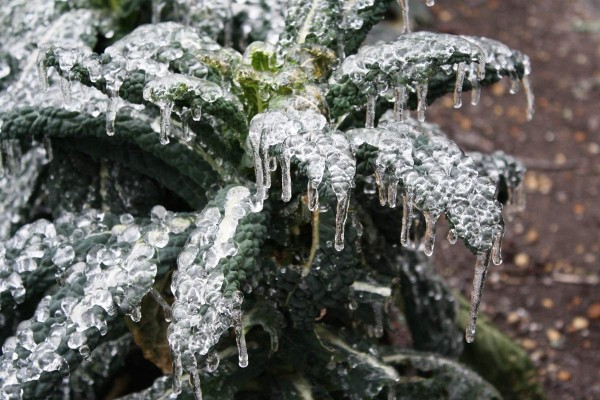 One week ago today, Williamsburg was blanketed in several inches of snow. And just about everywhere you turn, you can still spot the lingering reminders of one of the harshest winters we’ve seen in decades. It’s a sight that has many of us dreaming of spring. But what will all this wind, cold air, and snow mean for our colonial gardens once it finally does warm up?
One week ago today, Williamsburg was blanketed in several inches of snow. And just about everywhere you turn, you can still spot the lingering reminders of one of the harshest winters we’ve seen in decades. It’s a sight that has many of us dreaming of spring. But what will all this wind, cold air, and snow mean for our colonial gardens once it finally does warm up?
Despite temperatures hovering in the teens, we decided to tough it out and check in with our garden apprentices to get status reports on the fruits, vegetables, and herbs planted throughout the Historic Area. As our feet crunched through the snow and we strategically dodged patches of ice, Jenny Mrva and Emily Nelson pointed out the hardy survivors as well as the plants that didn’t seem to fare so well during our recent snowstorm.
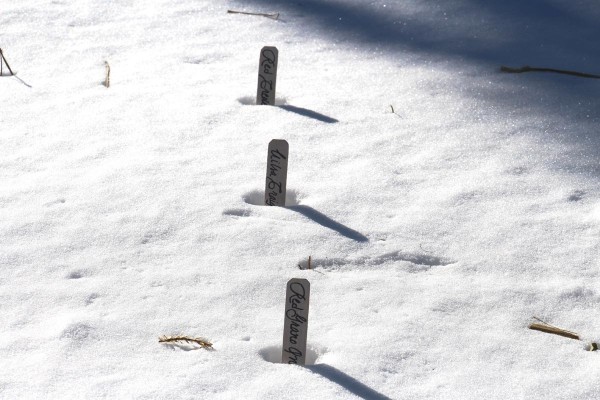 I don’t know about you, but I’ve always been a “bad news first” kind of person. Because of that mentality, let’s start with the list of possible goners. Artichokes, celery, and rosemary all seem to be in jeopardy. Though it made for a beautiful picture, the below bell glass wasn’t enough to save the lone rosemary plant in the Colonial Nursery. Jenny told us last winter everyone in town lost their rosemary plants except for the Geddys. By some miracle, sure enough, the massive rosemary bush located in the Geddy House Garden appears to have weathered the storms and is still thriving.
I don’t know about you, but I’ve always been a “bad news first” kind of person. Because of that mentality, let’s start with the list of possible goners. Artichokes, celery, and rosemary all seem to be in jeopardy. Though it made for a beautiful picture, the below bell glass wasn’t enough to save the lone rosemary plant in the Colonial Nursery. Jenny told us last winter everyone in town lost their rosemary plants except for the Geddys. By some miracle, sure enough, the massive rosemary bush located in the Geddy House Garden appears to have weathered the storms and is still thriving.
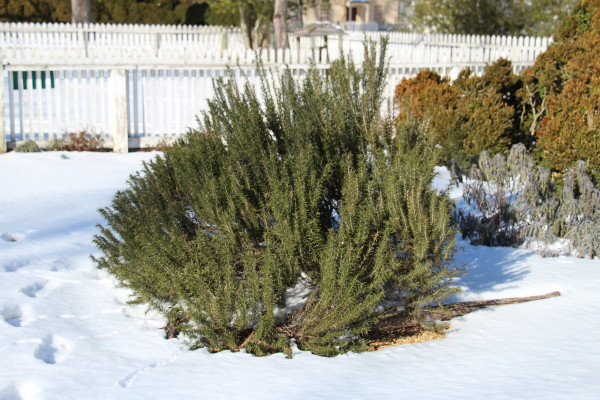 Also at risk are all the tender plants. Back in 1985, Historic Gardener Wesley Greene says the temperature in Williamsburg dropped to seven below and most myrtle, fig, bay, and pomegranate trees were killed to the ground in the Historic Area. The Landscape Nursery recorded negative two degrees last week so sadly it looks as though history may end up repeating itself. We’ll have a better idea of the dieback come mid-spring.
Also at risk are all the tender plants. Back in 1985, Historic Gardener Wesley Greene says the temperature in Williamsburg dropped to seven below and most myrtle, fig, bay, and pomegranate trees were killed to the ground in the Historic Area. The Landscape Nursery recorded negative two degrees last week so sadly it looks as though history may end up repeating itself. We’ll have a better idea of the dieback come mid-spring.
On the other hand—the spinach, lettuce, curly leaf (Italian) parsley, and broad beans should all be okay. The layer of snow is actually providing insulation to the spinach and beans and the layer of straw is insulating the soil around the parsley while the bell glass is protecting the foliage above ground. The gardeners put down that straw in early November as a precaution, well ahead of the first frost.
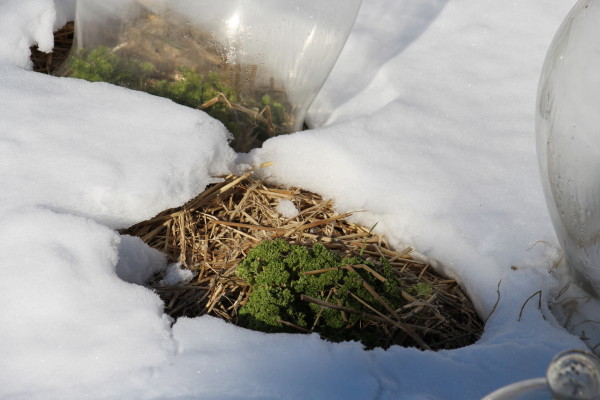 There are a few “wait-and-sees” including the cabbage. There’s probably quite a bit of damage on the outside but hopefully by covering them with a layer of straw, the hearts have been preserved. Emily tells us even if they do make it and are edible, the overall flavor will be negatively affected.
There are a few “wait-and-sees” including the cabbage. There’s probably quite a bit of damage on the outside but hopefully by covering them with a layer of straw, the hearts have been preserved. Emily tells us even if they do make it and are edible, the overall flavor will be negatively affected.
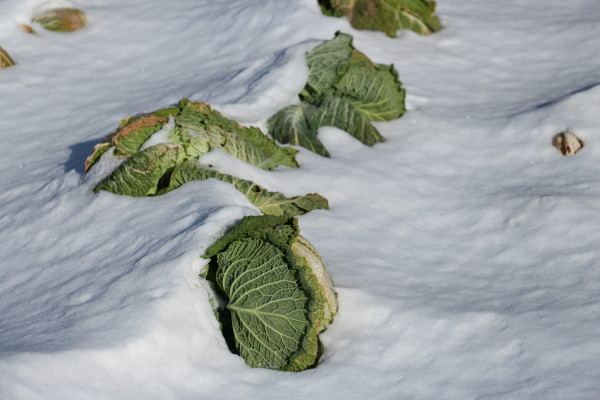 The whole “you win some, you lose some” gamble is nothing new to gardeners. Last week, we detailed just how harsh many winters were in Virginia during the 18th century. Landon Carter, who lived in Sabine Hall along the Rappahannock River in 1764 wrote this about his Cauliflower Broccoli, “They are dead from the winter-should have been covered with bushes on forks. Instead straw was used which rotted them.”
The whole “you win some, you lose some” gamble is nothing new to gardeners. Last week, we detailed just how harsh many winters were in Virginia during the 18th century. Landon Carter, who lived in Sabine Hall along the Rappahannock River in 1764 wrote this about his Cauliflower Broccoli, “They are dead from the winter-should have been covered with bushes on forks. Instead straw was used which rotted them.”
Because the ground is still frozen, our gardeners are behind in beginning their next hotbox so seedlings that would have been started by now (tomatoes, peppers, cucumbers, and melons) will mature a lot later than normal which means the lasting effects of winter could actually extend well into the summer!

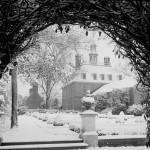
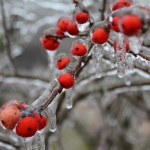
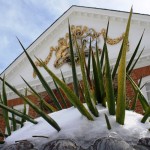
[…] varieties have been growing through the winter in our historic garden and the snow actually provided them with a layer of insulation. Amazingly, there was no need to cover or protect the plants. As you can see, they came up just […]